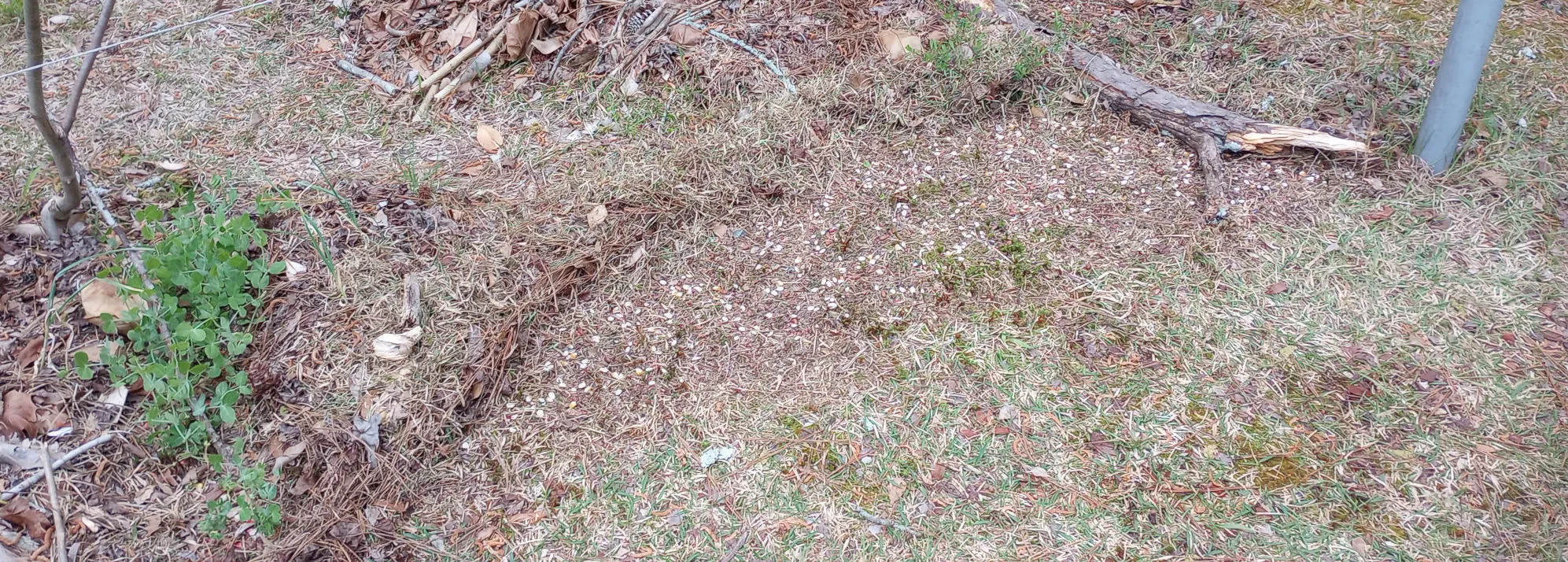picture of garden beds with plants or seeds, St Andrew’s Cross bush, a tree branch, and a berm
Nitrogen-Fixing Food Crops
- "Iron and Clay" cowpea (ran out, so went back and scattered them out well)
- Snap Pole Bean Rattlesnake 🫘
- Snap Bush Bean Mountaineer White Half-Runner 🫛
Nitrogen-Fixing Cover Crops
- Crimson Clover
- Red Clover
- Alfalfa
- White clover
Cover Crop
Buckwheat. (couldn't get drought-tolerant. sold out)
Crops
- Anasazi sweet corn (almost out. definitely need to save some of these seeds and the cowpeas)
- sunflower (edible, not ornamental or bird seed)
- Flat parsley - ran out, time for regular, curly parsley.
- Red Ruby 🥬
- Detroit Dark beet
- Early Scarlet radish - I am not sure if I will like this, but I missed the daikon radishes so.
- Southern curly mustard - doing well and always resembles a tastey dinner, happily soaking up the ☀️ from a pot.
- Leek
- Red Russian kale 🥬
- Swiss Chard - like beet seed because they are in the same family, who are all drought tolerant. I got a clump of seeds the other day!
Crop for cat
Cat grass
It took a few hours to cut the grass in today’s garden bed. It was a bit daunting and a bit tedious sometimes, and sometimes, I just wanted it to be over with; but other times, I was lazily lying on my mat and trimming the grass.
I started with cat grass on the edge of the bed since it’s on the edge of the garden plot, so if the neighbor cat comes back over, they might figure out that there’s a snack there for them. I had some buckwheat, today. I’m growing that as cover and maybe some food/seed.
I found a little more grass as I was dropping the initial type(s) of seed. Of course, this grass-cutting might be unnecessary, and a controlled burn might be easier. Like, if there's enough room for a fire, just piling up limbs or sticks that I'm trying to get rid of and burning them on a permitted day with a water hose nearby might make a great garden bed.
Didn't put any food crops with cat grass but did put cover crops. I hope the cats don't poop on my food crops! But if they do, I will clean it out, and I could let those crops go to seed? Some animal has dug some more in my plot and a bed. Previously, they had dug in the mulch near a garlic plant.🧄
With the big seeds, I can space them out by hand.
Stare-at-sky break, some stretches. No, I am not praying.
Not much drought.
I just go by one of those seed schedules that I see in seed stores or seed swaps. Didn't do that until last autumn.
When I walk by my food, grown full of nutrients, it's easy to harvest them
St Andrew's Cross volunteer who gets yellow cross flowers, provides seeds for birds & pollen for bees and butterflies, and might nurse the crops with shelter and shade during the scorching summers.

 garden plot corner
garden plot corner
Why doesn't he visit the United States?